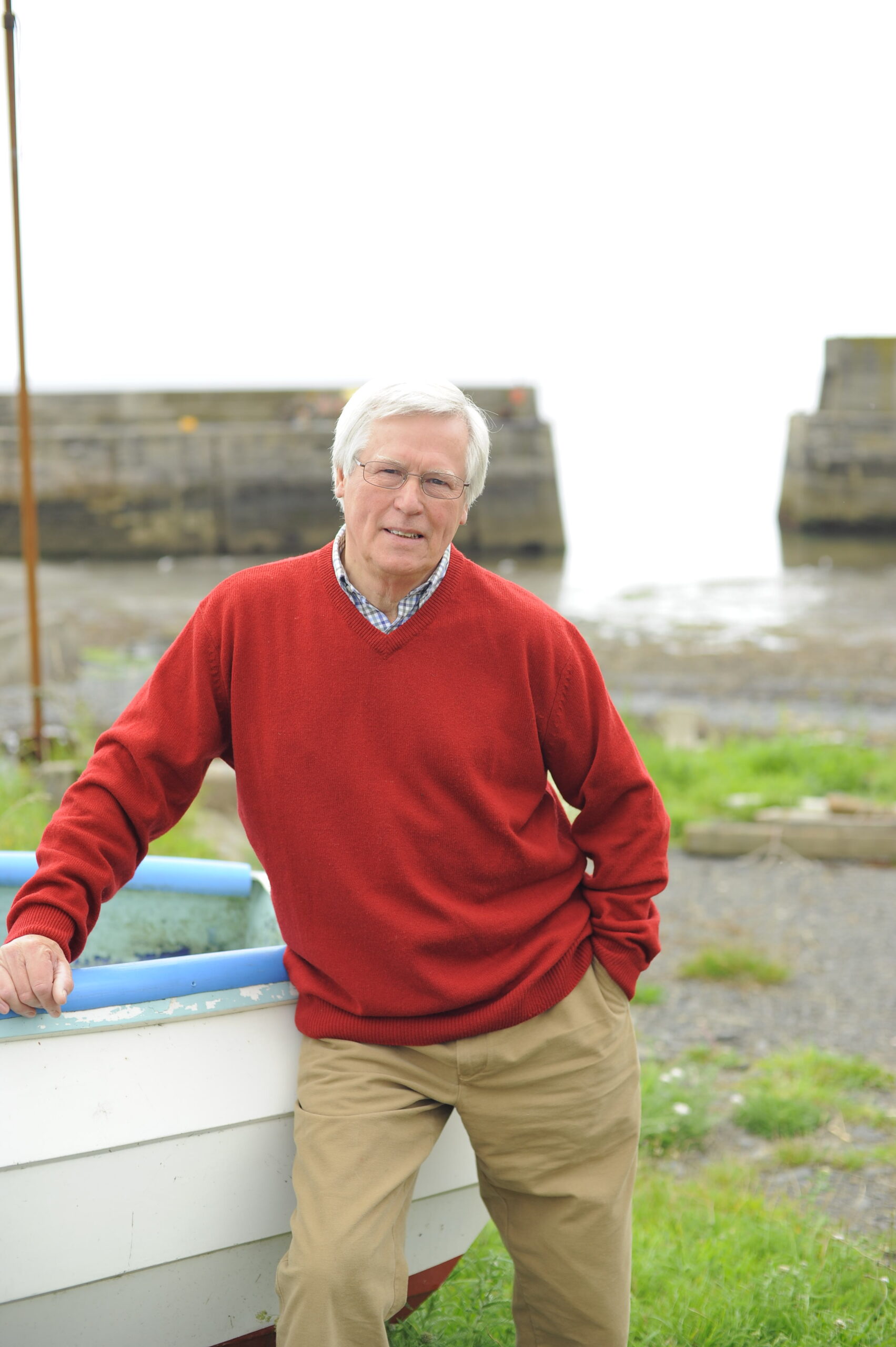Scone (pronounced scoon) Castle in Perthshire is perhaps most famous as the place Scottish kings were crowned while seated on its famous Stone of Destiny. However the castle was also where the famous botanist David Douglas once worked, a man who went on to discover more than 240 species of plants and trees in North America and, by bringing them home, dramatically changed the look of our countryside and our gardens.
John Craven goes on a ramble in Scone's grounds with the estate’s head gardener Brian Cunningham to find out more
Who was David Douglas?
“He was the Indiana Jones of plant collectors, and it was from a seed he brought back from North America in the 1820s that this giant grew,” says Brian, pointing to a huge Douglas fir that stood in our way, totally dominating its surroundings. It was, in fact, the first of its kind in the UK and named after the daring explorer who discovered it, David Douglas.
When and where was David Douglas born?
But let’s begin with David Douglas's birth in 1799, the son of a stonemason on the Scone estate. He served his apprenticeship there as a gardener before moving to the botanical gardens in Glasgow.
How did he become a plant collector
Douglas became a protégé of its director, Sir William Hooker, who put his name forward when he heard the Royal Horticultural Society (RHS) was looking for a plant collector to travel around North America in search of new species.
In his early 20s when he got the job, Douglas made a total of three expeditions to the largely unknown continent over the next 10 years, taking great risks in the wilderness. He brought back conifers including the Douglas fir (he probably found the seeds along the banks of the Columbia River), the Sitka spruce and garden plants such as the lupin, California poppy and flowering currant.
He travelled more than 4,000 miles through often hostile territory, dodging none-too-friendly Native Americans in warpaint, almost drowning when his canoe capsized in a fast-flowing glacial river and, incidentally, becoming the first European to climb a North American mountain – all the while hunting for species he had never seen before.
“His journeys were feats of enormous endurance and he has often been acclaimed as the world’s greatest plant collector,” says Fiona Davies, custodian of the RHS’s history and archives. “Certainly, no previous collector added so many new species to the British garden, and since he collected in temperate environments the plants would prove to be hardy in this country.
What is he most famous for?
“Today, he is probably most associated with conifers; he introduced more new species than any other collector and helped to transform British forestry and landscape in the process,” says Davies.
Other trees he added to his collection included the sugar pine, white pine, ponderosa pine, lodgepole pine, Monterey pine, grand fir and noble fir. He wrote home: “You will begin to think I manufacture pines at my leisure!” Hardly at leisure, considering what he went through to find them, but as a result of his endeavours, around half of the UK’s present-day woodlands are conifer.
On the Scone estate, with its fine and extensive pinetum, what does Brian Cunningham make of his distinguished predecessor? “He was brave; far braver than I would ever be. Today, if we were to travel in search of plants, we would do all our research first and be sent out with the best of clothing and equipment, but not guys like him,” he says.
“That’s why, when I see any Douglas fir, but especially this one, I instantly have the image of the man in my head and picture all the troubles he faced just so I can enjoy their beauty nearly 200 years later. I dream of one day following in his footsteps to the Pacific Northwest to see these giants in their own environment, but it’s an honour to care for them in the place where he trained.”
When did David Douglas die?
The story of David Douglas is one of achievement against all the odds, of a low-born 19th-century Scottish gardener whose adventures in the New World made him one of the great heroes of the botanical world.
Yet his life ended in tragedy. On his final expedition in 1834, he headed from North America to Hawaii and was last seen alive while plant-hunting near the mountain hut of Englishman Edward ‘Ned’ Gurney, an escaped convict who hunted wild bullocks.
Douglas’ body was found at the bottom of a large, deep pit that had been dug by Gurney to trap these creatures. Reports at the time said he had been gored to death, with no chance of escape, by a bullock that had also fallen into the pit. A terrifying end for a man who had devoted his short life to the gentle pursuit of trees and flowers.
Among some of the locals, suspicion fell on Gurney because the gold coins Douglas had been carrying were never found. The murder theory was, though, largely discounted and Douglas was buried in a simple grave in Hawaii. A monument was later built on the spot where he died and another stands at Scone.
His obituary in The Gardener’s Magazine emphasised that the rare and beautiful plants he introduced had been distributed all over Europe, and concluded: “If we only imagine the British gardens deprived of the plants introduced by Douglas we shall find them but very little further advanced, in point of ornamental productions, than they were a century ago”. That is the impact Douglas had then, and his legacy is many times greater now.
- John Muir: Meet the Scottish visionary environmentalist who transformed America's wilderness
- Meet Scottish naturalist and author Eliza Brightwen
- William Henry Davies: Welsh poet, writer and 'super-tramp'
- Beatrix Potter: history of the children's author, farmer and conservationist
Top image: David Douglas © Curtis's Botanical Magazine Public domain, via Wikimedia Commons
